Collection of Smithsonian National Museum of American History (2015.0252).
During the war, the United States government incarcerated many people in camps and prisons across the home front. The government declared hundreds of thousands of Japanese, Italian, and German people across the US and Latin America to be enemy aliens, and confined them in prisons and camps. [1]
The government sent Conscientious Objectors to work camps to support the war effort, imprisoning them if they refused. And in the Territory of Hawai’i, the military declared martial law, restricting the civil liberties of those living there. [2]
Enemy Alien Detention Camps
Within hours of the attack on Pearl Harbor, the President issued Executive Orders 2525, 2526, and 2527. These declared all foreign nationals of Japan, Italy, and Germany (respectively) as enemy aliens. Several thousand were immediately arrested, having been previously identified by the FBI as allegedly dangerous to the United States. [3]
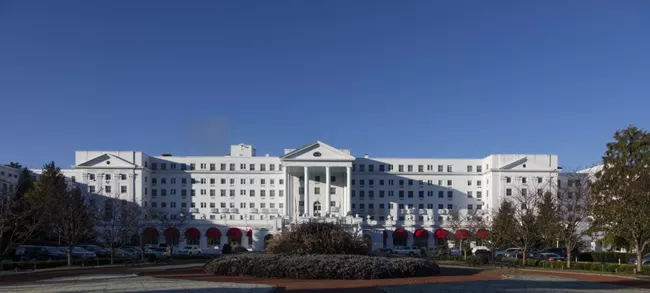
Collection of the Library of Congress (https://www.loc.gov/item/2015634494/).
By the end of the war, the government had incarcerated more than 31,000 suspected enemy aliens and their families, not including those sent to War Relocation Camps.
Most of those held as enemy aliens were German and Japanese; there were also a few hundred Italians held. Archaeology done at the sites of enemy alien internment camps has documented the day-to-day realities of these sites. [5]
Japanese War Relocation Authority Incarceration Centers
In February 1942, the President issued Executive Order 9066. It established “military areas” across California and in parts of Oregon, Washington, and Arizona. People – including American citizens – could legally be excluded from these places.
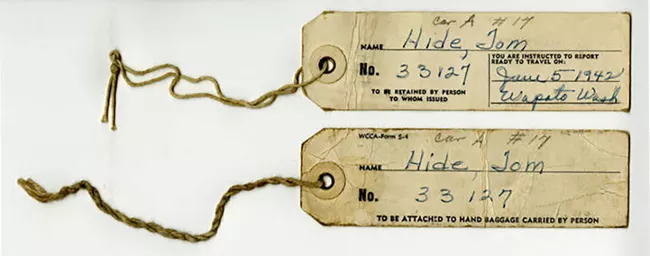
Collection of Washington State Universities Libraries: Manuscripts, Archives, and Special Collections, Tom Hide Collection (SC 014.1).
With only 48 hours’ notice before the government detained them, few people were able to make arrangements for their homes, businesses, and property. Some white Americans helped by buying and holding on to their possessions until after the war. But most were unable to make arrangements and lost everything except what they were able to carry with them. [8]
The first stop was at a Control Center, where the government issued families a number and told them when and where to report. Families became known only by their numbers. At the allocated time, families — wearing their number tags — boarded buses or trains that took them to assembly centers.
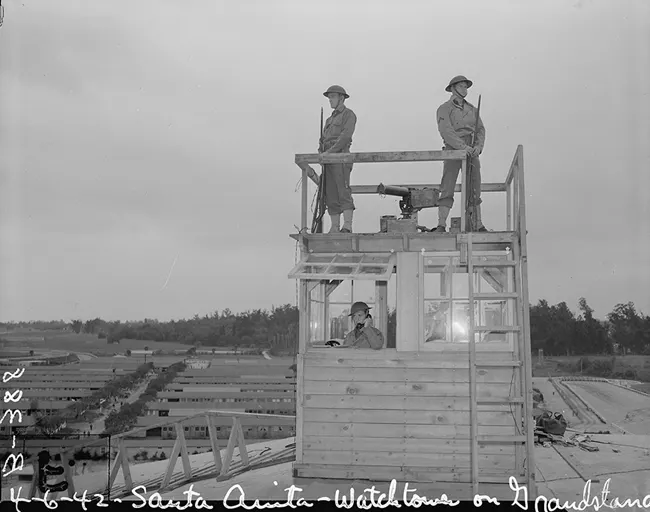
Collection of National Archives and Records Administration (NAID: 537019).
In the WRA relocation centers, four or five families lived together in sparse, tar-papered barracks. Many residents worked for the camps or for farms beyond the fences, earning up to $19 per month.
Those considered “troublemakers” were sent to the higher security War Relocation Center at Tule Lake, California. Archaeology done at several relocation centers provides information on the day-to-day lives of those incarcerated. This includes the persistence of Japanese cultural activities (sumo, gardens) and illicit activities (making and consuming sake). [10]
The last American incarceration center for people of Japanese descent closed in 1948. [11] In 1982, the US government found that the incarceration of Japanese and Japanese Americans stemmed from “race prejudice, war hysteria, and a failure of political leadership.” [12]
Forced Relocation of Alaska Natives
Following the Japanese invasion of Alaska’s Aleutian Islands, over 800 Native Alaskans were forcibly relocated, “for their own safety.” Allowed to bring only a few items like one bag and one blanket each, the US military shipped them thousands of miles from their homes.
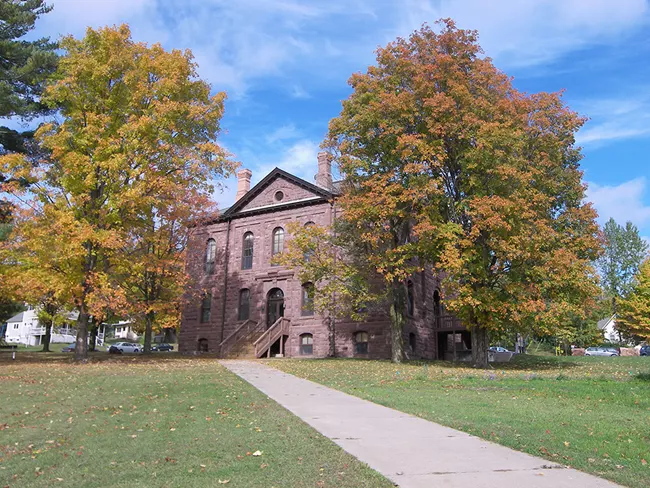
Collection of the National Park Service.
Prisoner of War Camps
The United States was host to more than 425,000 Prisoners of War. These were mostly Germans, but tens of thousands of Italians and thousands of Japanese POWs were also interned here. [14] After capture overseas, the military shipped POWs to the US, where they were imprisoned in one of over 700 camps.[15] Unlike those held as enemy aliens or sent to the WRA centers, the treatment of POWs was dictated by the Geneva Convention.
They were fed well, given clothing and toiletries, and had access to the same medical and dental treatment as US troops. [16] Many Americans felt that the POWs were being treated too well, while American citizens were dying overseas. Archaeological studies at POW camp sites in the US document the experiences of those held there. [17]
The government leased out as many as 265,000 POWs to fill non-military labor shortages. Many POWs worked in agriculture, picking produce, packing meat, and canning product.
Farmers paid the government 45 cents per hour per POW (about $8 in 2023). The prisoners earned 80 cents per day (about $14 in 2023) for their labor, paid in camp scrip or chits. This system prevented them from having American cash if they escaped. POWs were able to spend their wages in camp canteens, with access to goods including candy, tobacco, and low-alcohol beer and wine. [18]
In September 1943, Italy surrendered to the Allies and declared war on Germany. This released Italian POWs from the Geneva Convention, allowing them to do military work.[19] This released Italian POWs from the Geneva Convention, and allowed them to take on military work. [19] Offered the chance to move to lower-security camps and work towards defeating Germany, many Italian POWs volunteered.
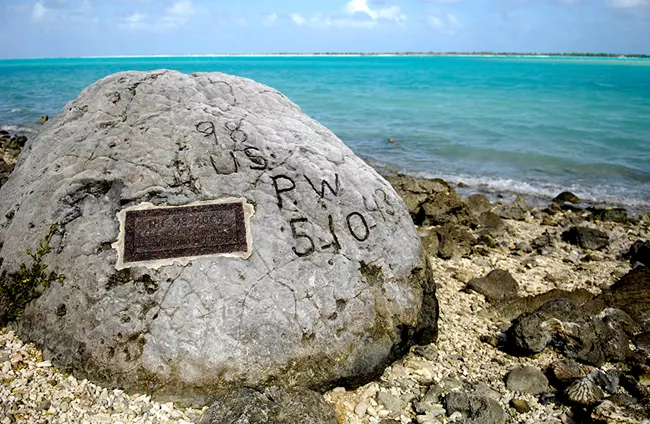
Collection of the US Air Force (080112-F-2034C-203.JPG).
Americans Incarcerated by Enemy Forces
When Japan captured American territories, they generally sent US military members to POW camps in Japan, China, and elsewhere. Civilians, however, found themselves under often brutal control by the Japanese.
Afterwards, they blindfolded and killed the Americans and buried them in a mass grave. An escapee (later caught and beheaded) chiseled the date of the massacre in a nearby rock. [23]
On Guam, civilians suffered starvation, rape, murder, and forced labor under Japanese occupation. Near the end of the war, the Japanese forced up to 15,000 Chamorro to march to incarceration camps like Manenggon in the island interior. There, those who survived lived with inadequate shelter, no sanitary facilities, no medical care, and very little food until American forces freed them in July 1944. [24]
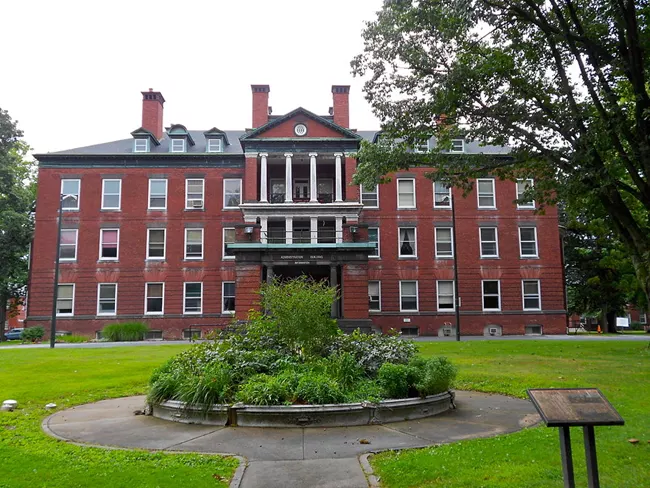
Wikimedia, Public Domain.
Conscientious Objectors
The Selective Service Act of 1940 contained provisions for conscientious objectors. The military assigned those opposed to combat to noncombatant military roles. Those who were opposed to military service at all were “assigned to [unpaid] work of national importance under civilian direction.” [25]
Some in the CPS served as “human guinea pigs” in a series of medical experiments done by the Office of Scientific Research & Development and the Office of the Surgeon General. These experiments included documenting the effects of starvation, cold weather, high altitude, and malaria. CPS workers logged over 8 million personnel days of work during the program. [26]
There were over 150 Civilian Public Service camps across the United States, including Puerto Rico. Several of them took over former CCC camps. The first, Patapsco Camp in Maryland, opened on May 15, 1941. Over 6,000 men who refused to work at all as conscientious objectors went to prison for violating the Selective Service Act. The CPS camps were closed in March 1947. [27]
Martial Law in Hawai’i
Within hours of the attack on Pearl Harbor, the Governor of the Territory of Hawai’i declared martial law. This suspended the constitutional rights of everyone in Hawai’i, putting all legal authority in the hands of the US Army. [28]
The army censored the press, long distance telephone calls and cables, and all civilian mail. They instituted a curfew and blackout, and required the registration and fingerprinting of all civilians (except small children).
Many residents of Japanese descent lost their jobs. The military replaced the civil court system, trying all crimes in military courts. They wouldn’t allow jury trials, believing that jurors in Hawai’i could not be impartial. Ninety-nine percent of the estimated 55,000 civilian cases heard in the military courts resulted in guilty verdicts. [29]
In a ruling towards the end of the war, the Supreme Court described the treatment of Hawaiian civilians as “a wholesale and wanton violation of constitutional liberties.” [30] The military reinstated some functions of the civilian government in March 1943, but martial law remained in effect until October 1944. [31]
It was not just those incarcerated or who were affected by enemy attacks on the home front who felt the effects of the war. Across the Greater United States, Americans found many items in short supply and were asked to recycle and to grow their own food.
This article was written by Megan E. Springate, Assistant Research Professor, Department of Anthropology, University of Maryland, for the NPS Cultural Resources Office of Interpretation and Education.